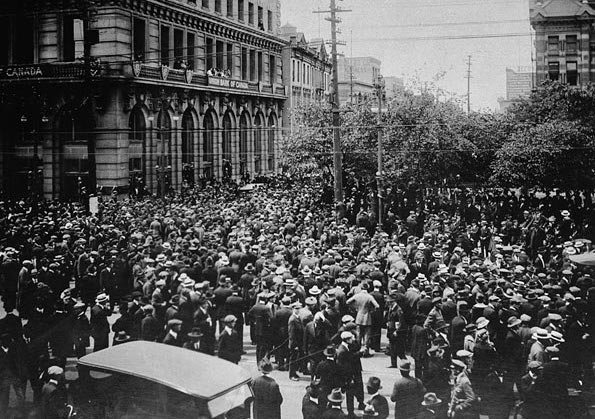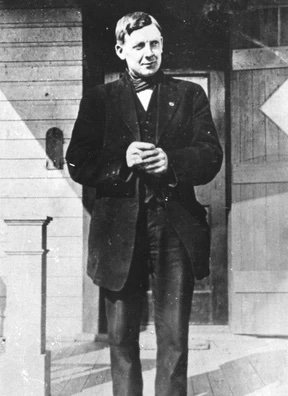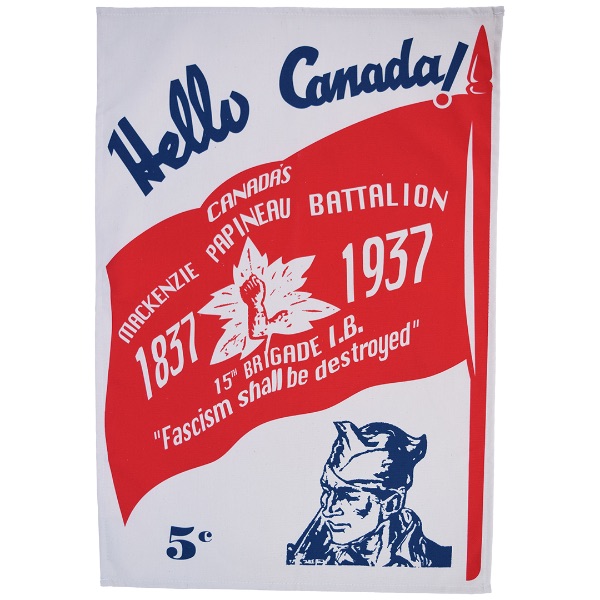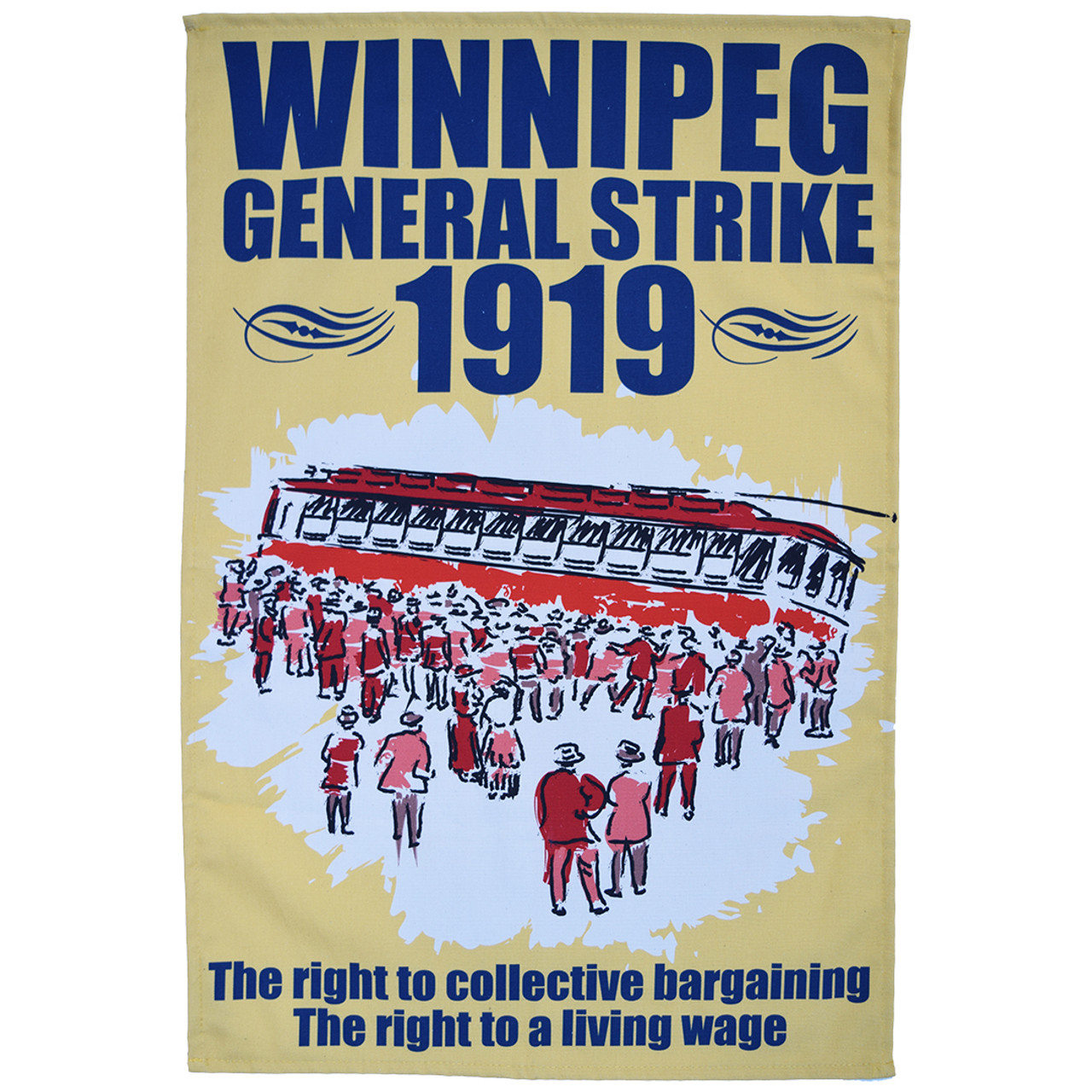Class Against Class: The Radical Life of Ginger Goodwin
Posted by Pete on Jul 27th 2024

On this day in 1918, Albert "Ginger" Goodwin was shot dead by a policeman on Vancouver Island, catalysing the Canadian labour movement
“...we know that all this misery is the outcome of someone's carelessness, and that ‘someone’ is the capitalists, those who own the machinery of production...”
In May 1887, Albert “Ginger” Goodwin was born in the village of Treeton in Yorkshire, England.
Thirty-one years later, on this day in 1918, he was shot dead by a policeman on Vancouver Island, Canada, and his death sparked into life the radical Canadian labour movement.

An organiser for the Socialist Party of Canada, Ginger Goodwin fought for workers' rights and unionisation
During the early twentieth century, the Canadian working class was very cosmopolitan, including many migrant workers in its ranks.
One of these was Albert Goodwin, creatively nicknamed “Ginger” for his red hair...
In 1906, having already worked for several years as a miner in Yorkshire, Goodwin emigrated to
Nova Scotia to find work in the coalmines of Glace Bay.
A few years later, Goodwin crossed to the Pacific coast of Canada, to work for the Canadian Collieries company in British Columbia.
It was in Cumberland, BC, that Ginger Goodwin became active in labour organising, too.
The mining sector has often been a seedbed of
working-class radicalism.
Life as a worker down the mines, digging up resources for the profit of the mine-owners aboveground, has a way of making obvious the exploitation of the working class.
Canada has a rich history of radical struggle, including the Canadian soldiers who fought in the Spanish Civil War
See the Mackenzie-Papineau Battalion tea towel
Albert Goodwin was an organiser of the 1912-14 Coal Miners’ Strike in British Columbia, fighting for union recognition and safer working conditions (mining was often allowed to be fatal for workers by bosses only concerned with their own profit).
But the strike was defeated, and Goodwin was blacklisted in Cumberland for his troubles. Yet the experience of the strike only deepened his commitment to class struggle.
In the midst of the Cumberland strike, Goodwin became a socialist.
He realised that localised strikes alone were not enough. The abhorrent conditions imposed on miners by their bosses were a problem of the system of capitalism in Canada and the wider world as a whole, and it needed a systemic solution:
“To throw this system over we have got to organize as a class and fight them as class against class... and our weapons are education, organization and agitation... and the principles of Socialism.”
Blacklisted in Cumberland, Goodwin moved to Trail, BC, where he found work as a smelter and became an organiser in the Mining and Smelter Workers’ Union.
Goodwin also became an activist for the Socialist Party of Canada (est. 1904), running in the 1916 provincial elections, albeit without success.
In the context of the First World War, radical socialists in Canada,
like their comrades in the United States, were outspoken critics of the conflict as a militaristic and imperialist project in which the workers of the world had no interest.
Goodwin therefore resisted going to the war as a conscientious objector:
“War is simply part of the process of capitalism. Big financial interests are playing the game. They’ll reap the victory, no matter how the war ends.”
The Winnipeg General Strike of 1919 was catalysed by the death of Ginger Goodwin a year earlier
See the Winnipeg General Strike tea towel
Goodwin continued his labour activism in Canada during the war, too.
In November 1917, he helped call a strike for the Eight-Hour-Day at the smelting plants in Trail.
But then, very conveniently, the state moved to conscript Goodwin and a number of other labour activists to fight and probably die in the Canadian armies in Europe.
True to his antiwar and anti-militarist principles, Goodwin repeatedly appealed against his conscription ruling, without success.
Then, around April or May 1918, Goodwin sought refuge in the Cumberland Hills of Vancouver Island with a number of other draft resisters.
Aided by the local community, the men found shelter near Comox Lake until armed police moved in to the area to locate and arrest them.
Then, on 27 July, in very murky circumstances, an officer found Goodwin and shot him dead.
The police claimed that Goodwin had been killed in self-defence, but the Canadian working class was utterly unconvinced.
On 2 August 1918, the day of Ginger Goodwin’s funeral, the Canadian labour movement – his comrades in life and now in death – called a general strike throughout Vancouver to protest police brutality against workers.
It was the first general strike in Canadian history, soon to be followed by the even larger
Winnipeg General Strike of 1919.
Canadian radical politics had now clearly turned a corner, from the political demands for autonomy and independence by the likes of
Mackenzie and Papineau in the nineteenth century, to the new demand for social liberation by the entire Canadian working class.
This wouldn’t have happened as it did without the struggle and sacrifice of Ginger Goodwin.


